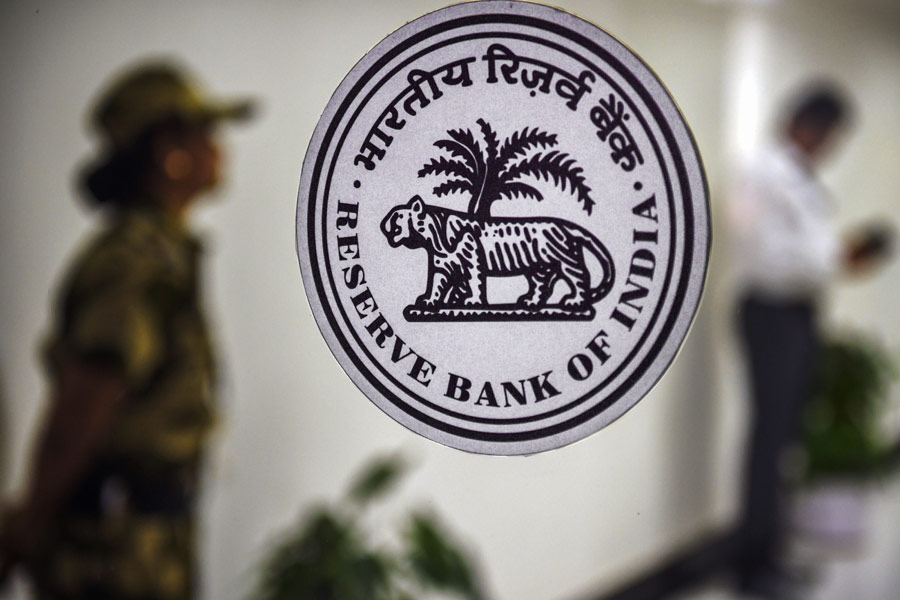Forex traders are increasingly coming round to the view that the Reserve Bank of India has started to draw a line in the sand for the rupee’s exchange rate at 83.55 against the US dollar.
The central bank has always shied away from the idea that it might set a prop for the rupee – brushing away any suggestion that it may even want to “fix” a rate.
But traders believe that the way the forex market has stacked up in the past few weeks – with the currency trading in a narrow range amid bouts of intervention by the RBI – it may not be such an implausible idea after all.
On Tuesday, the rupee closed at 83.51 against the US dollar against Monday’s close of 83.49. It came on a day that the Sensex ended with losses of nearly 384 points. Provisional data showed that foreign portfolio investors (FPIs) remained net sellers to the tune of ₹3,669 crore.
There has been very little movement in the domestic unit over the past few sessions as it has been hovering around 83.47 late last month.
The rupee has been fairly steady amid a decline in the country’s forex reserves which tumbled to a seven-week low of $637.92 billion on April 26. It was at $648.56 billion as on April 5.
Ritesh Bhansali, director at Mecklai Financial Services, feels that the RBI is protecting a level of 83.55-83.65 for the rupee. “That seems to be the line in the sand,” he told The Telegraph. Bhansali drew attention to the fact that like the rupee, the Chinese yuan has behaved in the same manner and been range bound.
“The yuan has been stuck in a range and the RBI is also trying to ensure that the rupee remains in a range,” he said, adding that the world’s second largest economy has been battling poor domestic demand forcing it to shovel goods and services to the international markets. Bhansali reckons that if the Chinese currency depreciates, the RBI may decide to remove the shackles on the rupee.
There is another element that lends some credence to the debate over a rupee backstop: back in April, the RBI put out the first of its bi-annual monetary policy report where it forecast retail inflation at 4.5 per cent and real GDP growth at 7 per cent in 2024-25. One of the baseline assumptions on which these forecasts were predicated was the belief that the rupee would hover at $83 against the US dollar during 2024-25.
At his media interaction after the April MPC meet, Governor Shaktikanta Das said: “It has always been the priority of the Reserve Bank to ensure stability of the Indian rupee…over the last four or five years, we have been building up (forex) reserves….(which) acts as a buffer against future risks, especially in a situation when the cycle turns and if there are significant outward flows of dollars… it is by way of a buffer that we are building up reserves... this whole approach adds to the strength of the national balance sheet.”
Not everyone, however, thinks that the RBI is trying to underpin the exchange value of the rupee.
Anindya Banerjee, vice-president & head of research-currency and commodities at Kotak Securities, says that while the RBI has been “quite aggressive” in defending the rupee, it isn’t right to suggest that the central bank has set a perch for the rupee or drawn a line in the sand.
It just so happens that the greenback has been weak against a basket of global currencies over the past few days after higher-than-expected inflation and poor jobs data in April forced the US Federal Reserve to delay the much-anticipated interest rate cut in the US.
Latest reports suggest traders in the US are now pricing in 45 basis points of Fed rate cuts by the end of 2024, with the first cut possibly in September.
There are other factors that may have stabilised the rupee. Geo political tensions have eased with latest reports indicating that the Hamas has accepted a ceasefire proposal put forward by Egypt and Qatar.
Moreover, crude oil prices have also been on the wane, declining from over $90 per barrel after Israel’s strike against Iran. Brent crude futures are now trading at $82.71 a barrel (July delivery) against the previous close of 83.33.
This is not the first time that there has been talk that the RBI may be drawing a line in the sand for the rupee’s exchange value.
The RBI, on its part, has repeatedly maintained it does not target a fixed exchange rate and its main aim is to prevent excessive volatility.











